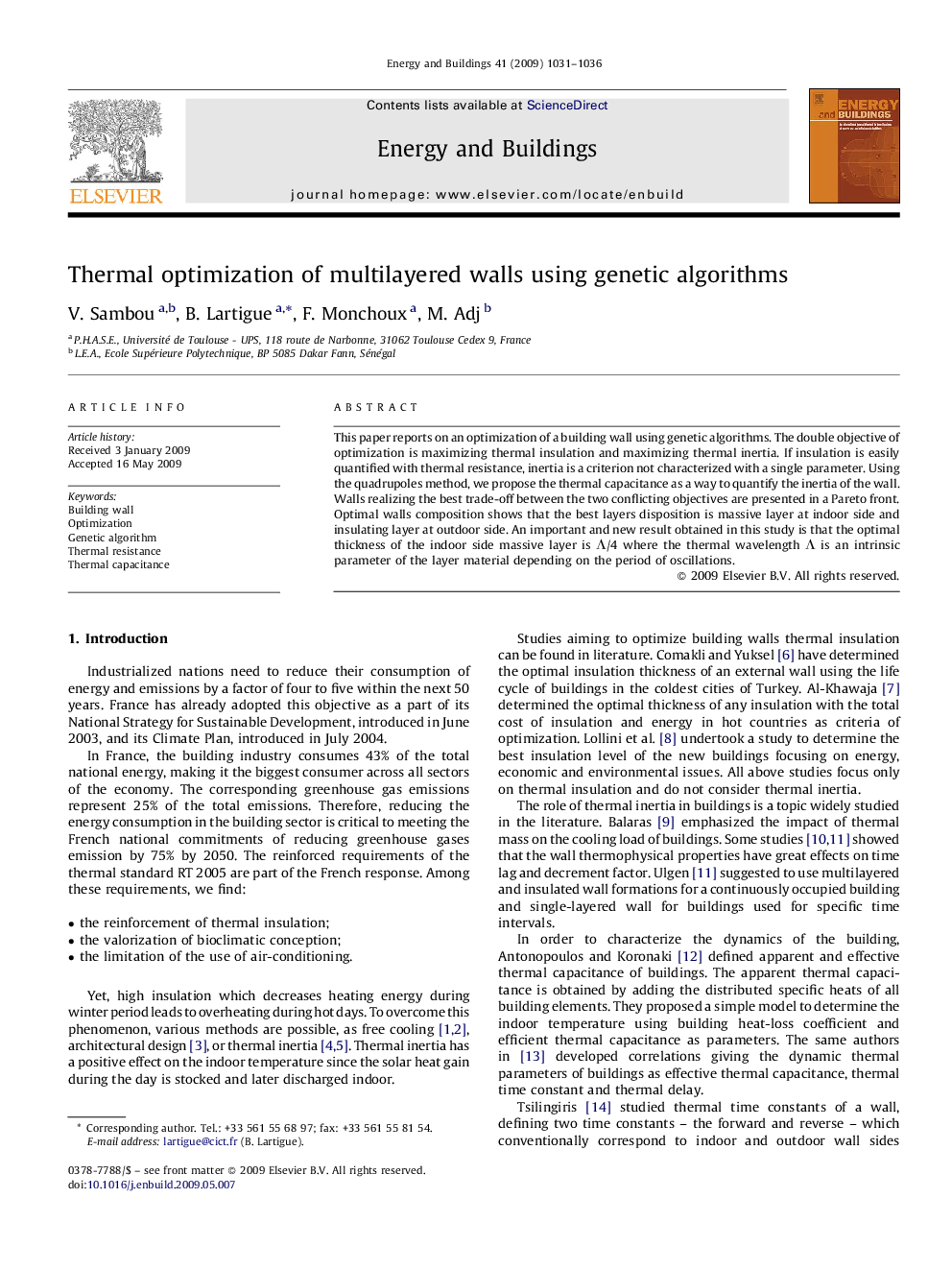| Article ID | Journal | Published Year | Pages | File Type |
|---|---|---|---|---|
| 264806 | Energy and Buildings | 2009 | 6 Pages |
This paper reports on an optimization of a building wall using genetic algorithms. The double objective of optimization is maximizing thermal insulation and maximizing thermal inertia. If insulation is easily quantified with thermal resistance, inertia is a criterion not characterized with a single parameter. Using the quadrupoles method, we propose the thermal capacitance as a way to quantify the inertia of the wall. Walls realizing the best trade-off between the two conflicting objectives are presented in a Pareto front. Optimal walls composition shows that the best layers disposition is massive layer at indoor side and insulating layer at outdoor side. An important and new result obtained in this study is that the optimal thickness of the indoor side massive layer is Λ/4 where the thermal wavelength Λ is an intrinsic parameter of the layer material depending on the period of oscillations.
